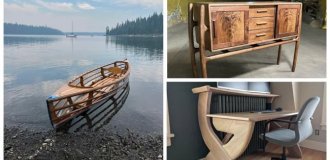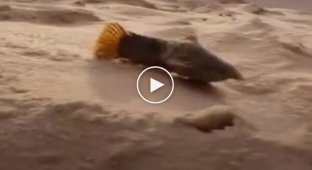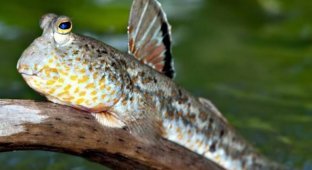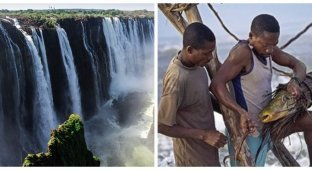Africans go fishing with a shovel (9 photos)
If you go to Africa, wake up early in the morning and find that the locals go fishing not with fishing rods and fishing tackle, but with picks and shovels, you will probably be very surprised. You might even think that Africans have a very unique understanding of fishing. And you will be wrong! 
Lungfish Protoptera
The fact is that on the African continent there are fish that live not in water, but in the ground, and can survive without moisture for months, and during periods of prolonged drought - for years! They are dug up, like potatoes, from the bottom of a dry reservoir, which can only be filled again during the rainy season.
For example, land fish are protopters. They are lungfish and live in the fresh waters of the tropics. The appearance of this species is caused by the fact that in dry conditions the fish are forced to adapt to the lack of life-giving moisture and survive in the ground. 
As soon as the protopters realize that the reservoir has begun to shallow, they begin to build a shelter in which it will be easier to survive the unfavorable period. The fish literally gnaws out a place for hibernation with its mouth in the muddy bottom, getting rid of pieces of mud through the gills. When the nest is built, the protopter settles in it, occasionally making forays to swallow air. When the reservoir becomes completely shallow, the earthen “cap” of the shelter hardens, so in order for air to get into it, the fish makes cracks in it with blows of its head. 
Having achieved a sufficient supply of oxygen to the nest, the protopter secretes a lot of mucus, which helps it maintain the level of humidity necessary for life, settles down more comfortably and falls into suspended animation.
There are land fish that use a slightly different survival strategy. They do not dig holes for themselves, but simply cover their body with mucus and turn into a kind of cocoon. 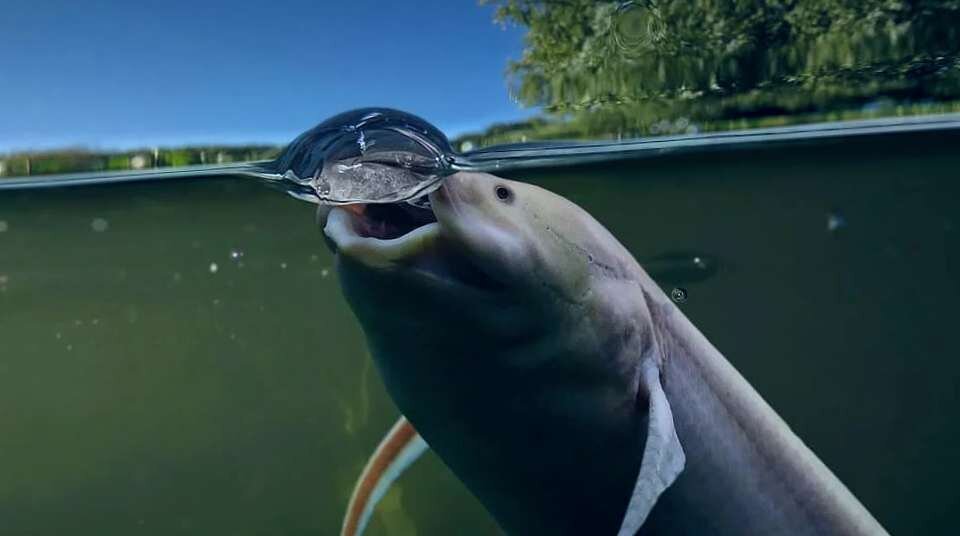
Hibernation can last 6-9 months, but cases have been recorded where hibernation lasted 4 years without any consequences for the health and welfare of the fish.
Africans love to catch earthfish because the taste and nutritional qualities of their meat are highly valued. Commercial fishing, however, is absent. The local population catches it for their own needs or small trade. 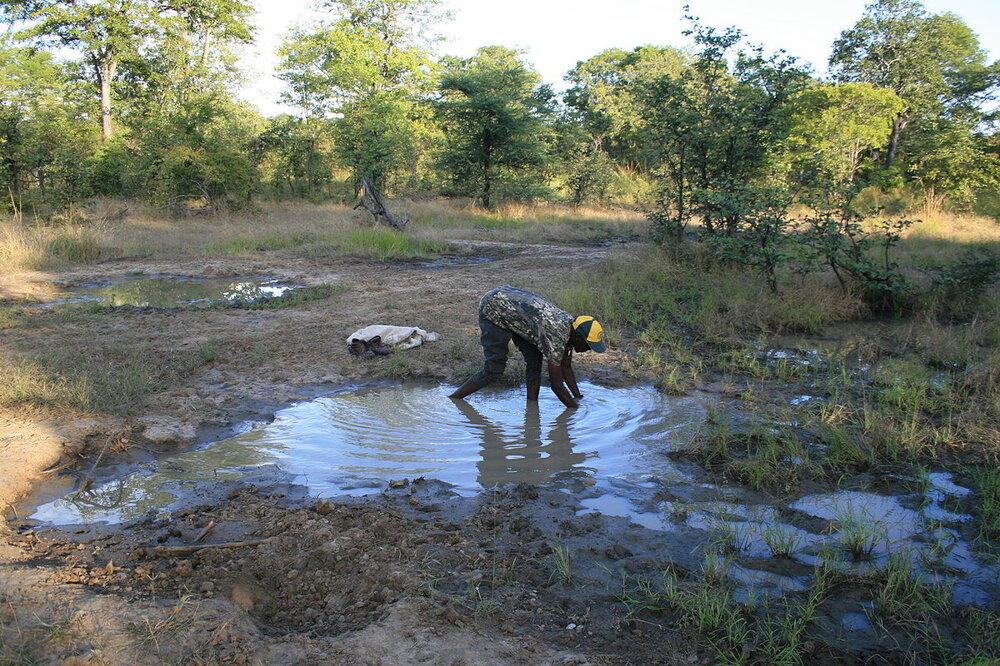
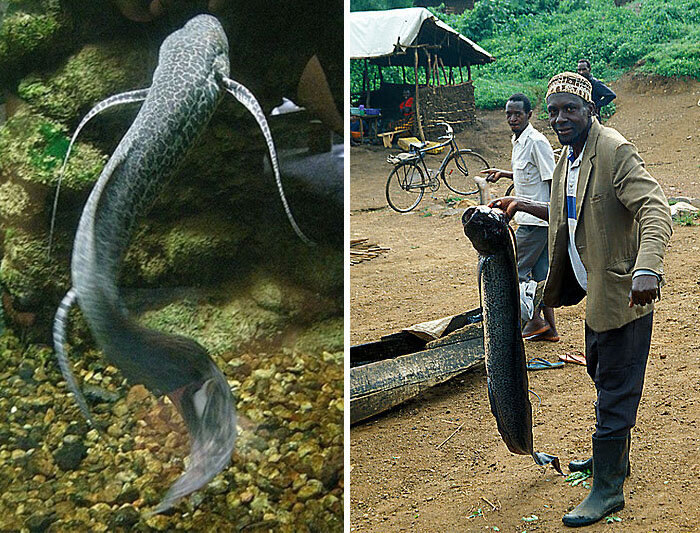
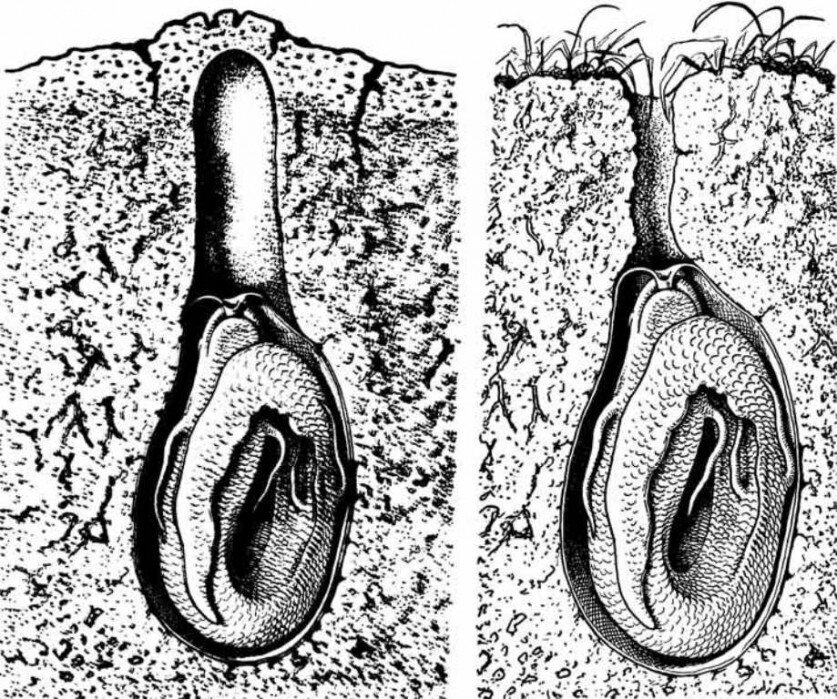
Finding a nest of earthfish is very easy. The natives examine the bottom of a dried-up reservoir, looking for darker-colored “caps” of burrows. A large protopter sleeps under a particularly large “hood” ranging from 5 cm to 15 cm in length. Smaller shelters, under which specimens not exceeding 15 cm snore peacefully, may not be noticed at all. 
Sometimes the fish “bunker” hardens strongly without moisture and resembles a stone, so the protoptera is removed from the ground right with it.
The natives who live in the Gambia claim that they can detect a large protoptera not visually, but by ear! The weighty sleeping fish, according to them, makes characteristic sounds that are clearly distinguishable in calm weather. Whether to believe their stories is up to the reader to decide, because they have not been confirmed by science. 
The Sudanese catch earthfish in their own way, doing it in a completely original way. They take a special drum and beat it so that the sounds resemble falling raindrops. Deceived by such cunning, the disturbed protopters utter a treacherous smacking sound and thereby reveal themselves. Moreover, some of them are so happy about the rising water that they crawl out of the nest completely. Well, the hunters can only stretch out their greedy hands to take their easy prey. Who knows, maybe over time Her Majesty evolution will teach earthfish to be a little smarter!



